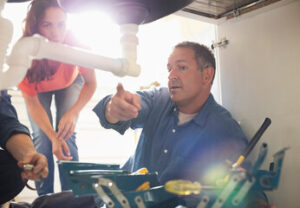Pokemon – A Global Phenomenon
Pokemon, short for Pocket Monsters, has become one of the most influential gaming franchises in history. Its success has spawned multiple game series, TV shows, movies and trading cards.

Players capture and train Pokemon to battle with other trainers for victory. Pokemon 151 Canada can also evolve, becoming stronger and more powerful.
A central part of the Pokemon series, battles pit Trainers against each other and the opposing team of Pokemon. The aim is to reduce the other team’s hit points (HP) to zero by attacking with each of a player’s Pokemon. Some attacks have a special effect that affects the opponent in addition to hitting it, and others have a chance to critically strike. Trainers may also use items that help their Pokemon in battle.
The battles are contested between two teams of Pokemon, and depending on the type of battle there may or may not be restrictions on how many Pokémon each side can use or how the Trainers can switch between them. Each Pokemon has a set number of HP, and its hit points are lost when it is attacked. After the hit points of all the Pokemon on one side have been depleted, that team is declared the winner.
Some types of battles also have special rules, such as a Double Battle introduced in the third generation of Pokemon games where each of the two sides can have a partner Pokemon. In these battles, some moves have a chance to critically strike, while others have a stat-modifier effect that raises or lowers a Pokemon’s statistics for the duration of the attack. There are also SOS Battles, introduced in the seventh generation of Pokemon games, where wild Pokemon can call for help from allies. The allies summoned are usually members of its evolutionary line, but non-totem Pokemon can also call for assistance.
There are also Contest Battles, where the battle is judged by Mr. Contesta or his counterparts, Nurse Joy, and Mr. Sukizo. The Coordinator with the most points wins. Points are lost when a Coordinator’s Pokemon gets defeated, when a Pokemon misses an attack, or when the opponent successfully uses a particularly appealing move or combo.
Some of the most exciting battles in the Pokemon series come from Contests and Grand Festival events that follow the double performance format, which involves a pair of Pokemon performing a dance routine on stage before the judges. Some of the best battles of all time take place here, and seeing a well-matched pair of Pokemon trade blows with each other in a spectacle that combines beauty and strategy is an experience like no other.
Trainers
Trainers are the people who take on the challenge of catching, raising and training Pokemon. They may travel to different regions, battle Gym Leaders, and even compete in the Pokemon League. Regardless of the specifics, trainers are generally seen as individuals with their own unique personalities and styles. The first generation of core series games saw a wide variety of Trainers, from Youngsters who tend to stay near their hometown to Bug Catchers swarming through Bug-filled forests. The current generation has seen an even more varied collection of Trainers, from Frontier Brains who analyze battles to Ace Trainers aspire to win the Pokemon League.
A Trainer’s personality and style will usually be reflected in their type of Pokemon. For example, a Fighting-type Trainer will have the tendency to have more fighting Pokemon in their party while a Grass-type Trainer will have a lot of Grass-type Pokémon in their party. While not every player will have a character that fits into one of these stereotypes, most Trainers can be considered to belong to a certain class.
For instance, a Gym Leader who is a Grippy will have the tendency to be very harsh and direct with their opponents. On the other hand, a Team Galactic Grunt will likely have more of an emphasis on strategy and planning than physical strength.
The original Pokemon game introduced players to a world of capturing and collecting creatures, pitting them against each other in fierce battles. It was a unique concept that challenged players with the goal of “gotta catch ’em all.” Its creator, Satoshi Tajiri, was inspired by his own childhood experiences with insects and pitting them against each other.
Throughout the years, the Pokemon anime has seen many iconic trainers duke it out in epic battles. Some have become beloved for their style and tenacity, while others have been scorned for their methods or inability to capture certain Pokemon. There are many factors that contribute to a trainer’s style, including the type of Pokemon they choose to have, how much they train it, and how they interact with their trainers.
Pokefriends
Pokemon, short for pocket monsters, has captivated millions of kids, young and old alike. A TV show, a video game, trading cards, toys and more have all made the franchise a global phenomenon. In addition to its entertainment value, Pokemon has also had a positive influence on many children’s lives. It teaches valuable lessons about loyalty, teamwork and strategic thinking. As a result, it has been adopted as an educational tool in schools and cultural institutions around the world.
The series has sold more than 98 billion dollars worth of merchandise, making it one of the biggest media franchises in history. However, parents should be wary of the potential dangers of Pokemon. Children who are easily immersed in imaginative worlds may find Pokemon an endlessly immersive realm, one that can quickly shift from being creatively compelling to unhealthily compulsive or addictive.
There are also risks associated with the Pokemon Go mobile app, which uses GPS technology to track players in the real world. This could cause children to be distracted when crossing roads or putting themselves in harm’s way. In addition, Pokemon Go encourages users to interact with strangers and meet new people in a public space, increasing the risk of encountering dangerous situations.
Biological Composition
While the Pokemon anime may not be all about catching them all, catching is still a big part of the series. The main character, Ash, has caught a total of 78 Pokemon over the course of the show, but his companions have a much lower number. This is because they tend to focus on a few Pokemon and devote more time to developing them.
It’s important to keep your pokemon in good health to increase their chances of battling and evolving. They can do more damage to opponents when they have full health. Moreover, a full health bar makes them more likely to make a critical attack, which can double the damage that they do. This is why it’s important to keep your pokemon well-fed and happy by visiting PokeCenters whenever you can.
Trading
Trading is one of the main aspects of Pokemon that makes it so much more than just a video game. Players can trade Pokemon between the core series games to give them different abilities or a chance at evolutions. They can also trade limited and rare items between the game and online with other Trainers. This system allows Pokemon to expand their capabilities and become the best they can be.
While the trading feature has always been a staple of Pokemon, moving Pokemon between generations and from one game to another has been a bit more difficult. Up until Generation III, trading was only possible by using a Game Link Cable between two games. After that, the DS systems allowed for wireless communication between two games.
Despite this, the anime has never shown many trades taking place. Only seven significant trades have been shown throughout the entire show, and most of those are within episodes with Wally and his Magikarp salesman. In the games, a special machine for trading is used instead of hand-exchanging Pokémon. This machine allows two Pokemon to pass information between each other, and shows silhouettes of the Pokemon on a screen as they are passed through.
The ability to trade has also expanded in the X and Y games, with Quick Link and Festival Plaza options available. Unlike Generation VI, where a player can only trade between their own save files, these new features allow players to transfer their Pokemon and items between the paired versions of the game.
In addition, the X and Y games have introduced more forms of Pokemon that can be traded. Those include Dusk Form Lycanroc, Partner Cap Pikachu, and Rockruff with Own Tempo. Unlike previous generations, where a Pokemon’s moveset would change when they were traded to a new game, these moves are not lost.
The X and Y games also added an option to adjust the amount of Pokemon traded. This is useful if a player wants to keep a particular Pokemon, but doesn’t want to waste the items they’ll need to evolve it. This is especially helpful if a player plans on transferring a Pokemon with limited or rare moves, such as Precipice Blades or Origin Pulse.

